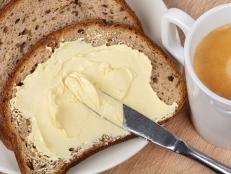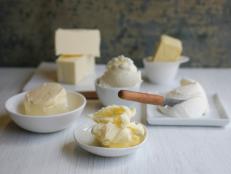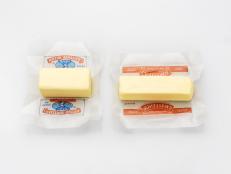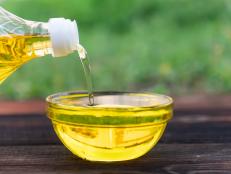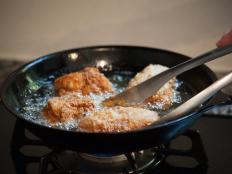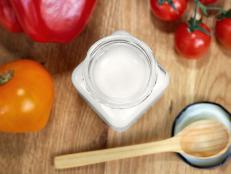What Is the Best Substitute for Shortening?
You probably already have them in your pantry.
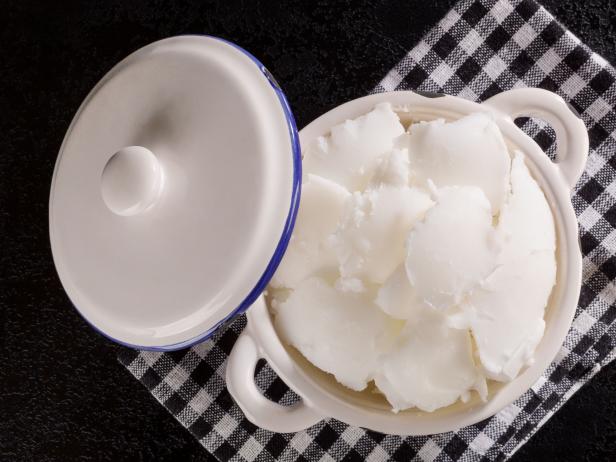
eskymaks/Getty Images
By Fraya Berg for Food Network Kitchen
Fraya is a chef and a contributing writer at Food Network.
When we think of shortening, it’s pure white Crisco that comes to mind, a.k.a. vegetable shortening. The true definition of shortening is a fat that is solid at room temperature, and that expands the list to butter and lard. For a deep dive into shortening, you can read our story What Is Shortening?. Before we dive into what to do if you don't have shortening, we'll walk you through what each type of shortening does in recipes so you'll better understand how to substitute for them.
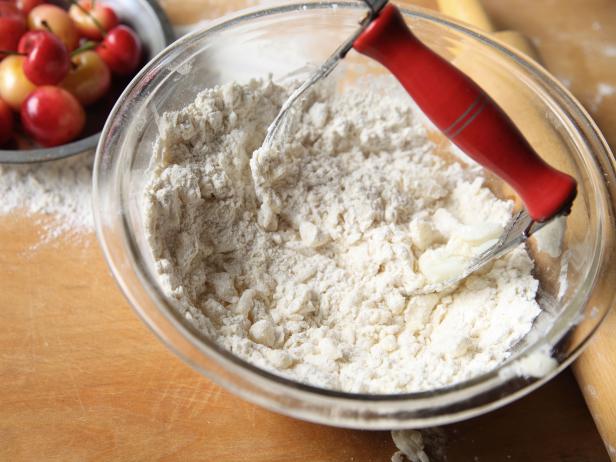
nebari/Getty Images
What Does Vegetable Shortening Do In Recipes?
Vegetable shortening is a versatile ingredient, acting as an oil when melted in a skillet when you’re frying chicken.
You use it in pie dough to coat flour; it prevents the formation of gluten giving you the flakiest, most tender dough with tiny pockets of air that puff when baked.
Vegetable shortening is flavorless, so it’s not going to interfere with the other flavors in the recipe. On the flip side of the coin, that's why most pie dough recipes that use vegetable shortening call for butter, too: for added flavor.
What Does Lard Do In Recipes?
Lard is used exactly like vegetable shortening in recipes: for frying foods like chicken, corn chips and French fries. There are many who would, given a choice, always have their fries and chips fried in lard.
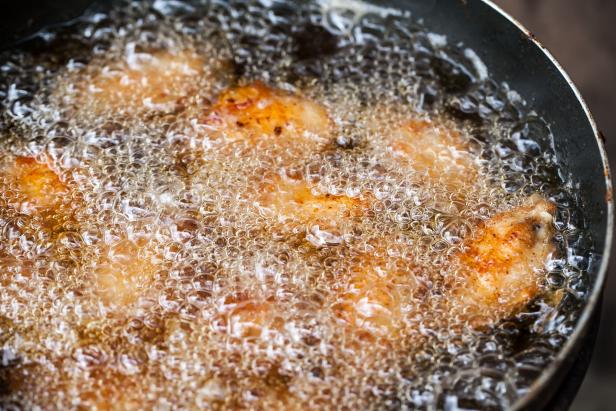
yokeetod/Getty Images
As a solid, lard was the shortening of choice for pie crusts many years ago. Vegetable shortening hadn’t been invented, and butter was more expensive than lard.
What Does Butter Do In Recipes?
Butter is not the best for frying because it has a low smoke point and lots of water.
It is however, an excellent shortening for baking because of the flavor it brings to recipes. An all-butter pie crust is delicious, although some bakers use butter and vegetable shortening in equal parts for the best of both worlds. When creamed with sugar in cakes and cookies, butter is what brings the tenderness and, in some cases, the delicate crumb: Scottish shortbread is an excellent example of just how “short” a cookie can be.
The Best Substitute for Shortening for Frying or Cooking
If you don't have vegetable shortening, you can always use lard - or visa versa.
However, under the assumption that you have neither on hand, you have a few good options. Vegetable oil, cocount oil, peanut oil, avocado oil and grapeseed oil all have high smoke points and can be used for frying - although vegetable oil will truly be your best bet because it's inexpensive and flavorless.
A final option is clarified butter - see our article, What Is Clarified Butter? for more info. You can't use it for deep frying, but you could certainly pour an inch or so into a pan and use it to shallow fry with flavorful results.
The Best Substitute for Shortening In Baking
Given that the three shortenings we’ve discussed - butter, vegetable shortening and lard - can, in most baking situations, stand in for one another, we’re left with a type of fat we haven’t yet discussed: margarine.
There are several types of margarine that are great for spreading on toast: they’re sold in tubs, are soft and smooth right out of the refrigerator, perfect for eating as is, won’t rip your bread. They cannot be used for baking in place of any shortening. They are made from vegetable oil and possibly some dairy with a lot of air and water whipped in; that’s how they stay soft and spreadable.
Instead, look for margarine sticks with 11 grams of fat per tablespoon (check the nutrition information), the exact amount of fat a tablespoon of butter has. Solid stick margarine will cream with sugar and give you a decent cookie or cake, and you can make piecrust with it too.
If you’re looking for a vegan option, look for Kosher margarine, which contains no dairy and is vegan. Or look for other plant butters - Country Crock makes a line that can be used 1:1 for butter or shortening in baking.
Recipes to Try Using Vegetable Shortening, Butter or Lard:
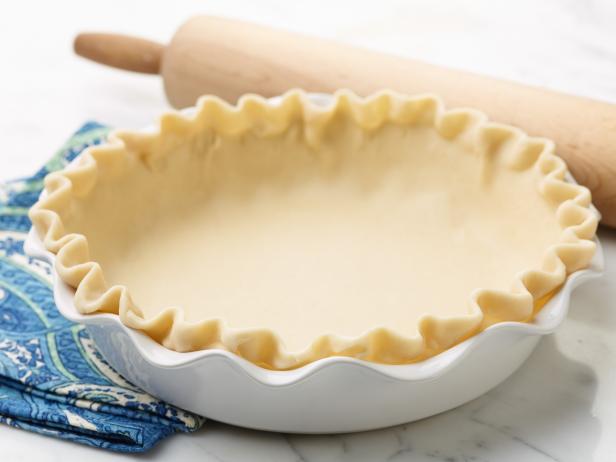
Renee Comet, 2015, Television Food Network, G.P. All Rights Reserved
Shortening coats the flour and prevents gluten from developing, ensuring a flaky crust. The vodka hydrates the dough enough to hold it together when you roll out the crust, but it evaporates quickly in the oven, making for even more flakiness.

Kat Teutsch Prop Stylist: Marina Malchin 917 751 2855
Lard is the traditional shortening used in tamales: It keeps the tamale dough light when it’s whipped into the masa harina, and just as importantly, it adds flavor.
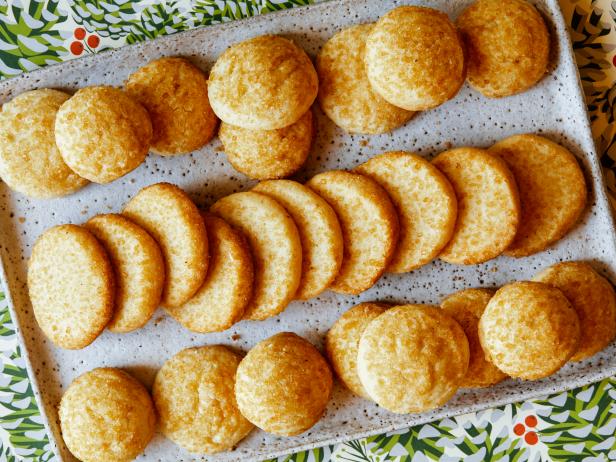
Teri Lyn Fisher
When you cream butter and sugar together thoroughly, the mixture becomes light and fluffy and incorperates flour very well. The end result is cookies with melt-in-your-mouth texture.

Tara Donne
In our Butter Spritz Cookies, butter is doing its thing to prevent gluten from forming when the dough is mixed, and it also is the main flavor. Thanks to Confectioner’s sugar, you get an unusually smooth, soft dough which squeezes easily through the cookie press.

Matt Armendariz, 2013, Television Food Network, G.P. All Rights Reserved
Instead of water, vinegar hydrates this dough, which works with the butter to powerfully prevent the formation of gluten, making for the tenderest, flakiest crust imagineable.
Related Links:
























